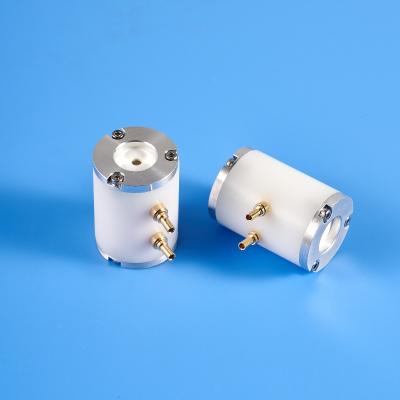High-Power Mid-Infrared Ultrafast Sources at 2 - 5μm Based on Dual-Wavelength Source - Part 1
1 Introduction
Mid-infrared ultrashort pulse lasers with a wavelength of 2-5 μm have irreplaceable application value in basic research and industrial applications due to their unique band position. In the field of molecular detection, 2-5 μm lasers can resonate with molecules such as CO and N2O, thereby realizing the detection of greenhouse gases and respiratory gases. In the field of space communications, the 3-5 μm band has weak absorption in the atmosphere and is called the "atmospheric transparent window". Communication systems working in this band have high communication efficiency. In the field of nonlinear optics, since the cutoff frequency that satisfies the phase matching of high-order harmonics is proportional to the 1.7th power of the pump wavelength, when mid-infrared ultrashort pulse lasers are used as pump light to excite high-order harmonics, they can excite higher-order harmonics. In the field of biomedicine, mid-infrared microspectral imaging is widely regarded as a non-destructive, label-free, and highly sensitive imaging technology, and its value in cancer research and diagnosis and in vitro tissue research has been verified.
At present, the methods for realizing mid-infrared ultrafast lasers include supercontinuum generation, optical parametric oscillators/amplifiers, mid-infrared solid-state/fiber lasers, intra-pulse difference frequency generation, and difference frequency generation. Supercontinuum generation technology can expand the output spectrum of ultrafast lasers to >10 μm0, but its spectral phase is relatively complex, and the energy proportion of a specific band is low, making it difficult to output high-energy tunable ultrashort pulses. Optical parametric oscillator/amplifier technology uses nonlinear crystals to achieve wavelength conversion, in which the optical parametric oscillator needs to design a cavity to meet the resonance conditions, and has high requirements for optical path design; the optical parametric amplifier does not require a resonant cavity and has a relatively simple structure, but it needs to provide signal light in the mid-infrared band, and has higher requirements for the front-end device. By doping rare earth ions such as erbium, thulium, and holmium into mid-infrared optical fibers and crystals, and combining them with mid-infrared mode-locked devices, the output band of the mid-infrared laser oscillator can be expanded to about 5μm. In addition, chromium-doped zinc selenide (Cr:ZnSe) and Cr:ZnS (www.wisoptic.com) lasers are two typical solid-state mode-locked lasers in the mid-infrared band. These two materials have a wide emission spectrum, extremely high quantum efficiency, good stability and high thermal conductivity, so they are called "titanium sapphire in the mid-infrared band". However, due to the limitation of the emission bandwidth of the gain medium, the output wavelength of the mid-infrared laser cannot be adjusted over a large range. The intra-pulse difference frequency generation technology uses the self-difference frequency phenomenon of a wide spectrum in the crystal to output a mid-infrared coherent spectrum with a bandwidth of up to 50 THz. This scheme can generate ultra-short pulses with stable carrier-envelope phase, and only requires one driving laser, and the experimental device is relatively simple. However, due to the limitation of its own spectral bandwidth, its spectral tuning capability and power output are still limited.



